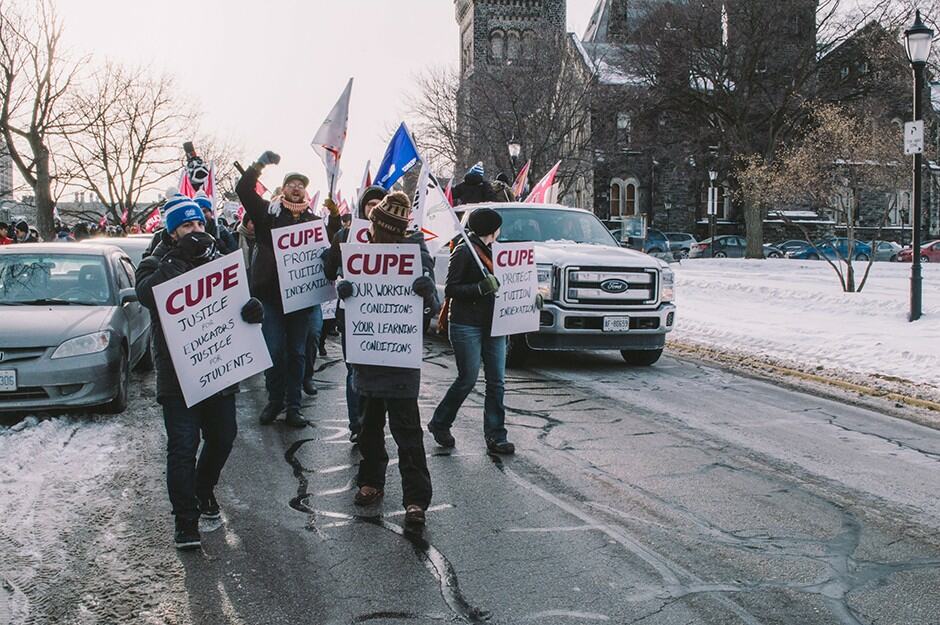On November 14, U of T’s Faculty of Law hosted a panel in which professors discussed Premier Doug Ford’s use of the “notwithstanding clause” in his conflict with the Canadian Union of Public Employees (CUPE). The panel, which was moderated by the Dean of the Faculty of Law Jutta Brunnée, critiqued Ford’s use of the clause.
Conflict between CUPE and the Ford government
During recent negotiations with Ontario’s provincial government, CUPE demanded pay raises for education and administrative assistants, custodians, and other education workers. They asked for an 11.7 per cent annual pay raise, pointing out that inflation has risen 17.8 per cent from 2012 to 2021.
The Ford government, however, is reluctant to pay up. The government initially proposed raises of two per cent for workers making less than $40,000 per year and 1.25 per cent for others, but the offer was rejected by CUPE.
On November 3, Ford’s Progressive Conservative government passed Bill 28, the “Keeping Students in Class Act,” to head off a strike notice issued by CUPE. The bill imposed a deal on workers and instituted heavy fines for striking. However, a 2015 ruling by the Canadian Supreme Court recognised striking as an “indispensable component” of collective bargaining and protected a union’s right to strike under the Canadian Charter of Rights and Freedoms. To preempt a court challenge, Ford invoked Article 33, a controversial part of the Charter known as the “notwithstanding clause.”
The bill received swift political blowback, including criticism from the Ontario New Democratic Party and the federal Liberals. Prime Minister Justin Trudeau protested Ford’s use of the notwithstanding clause; in a press conference on November 4, Trudeau said, “The Charter of Rights and Freedoms cannot become a suggestion.” Unions expressed outrage, and a broad coalition of unions began to consider a rare general strike.
On November 14, the Ford government repealed Bill 28. As of November 20, the government and CUPE have reached a tentative agreement, averting a strike.
The role of the notwithstanding clause
The notwithstanding clause allows federal and provincial governments to temporarily circumvent Sections 2 and 7–15 of the Charter. These sections protect Canadians’ fundamental civil liberties, including the right to strike. By preemptively invoking the notwithstanding clause, the Ford government hoped to avoid a court challenge to Bill 28.
During the U of T panel discussion, U of T Law Professor David Schneiderman provided historical context for the notwithstanding clause. According to Schneiderman, the history of the American judiciary helped inspire Canada’s notwithstanding clause. During the Lochner Era — named after Lochner v New York and spanning from 1897 to 1937 — multiple American Supreme Court cases greatly limited government intrusion in the capitalist free market.
As a result, the US Supreme Court played a crucial role in stalling “legislative innovations to protect vulnerable workers.” Looking to the mistakes of the early twentieth-century American system as an “anti-model,” drafters “rationalize[d] the inclusion of the notwithstanding clause” in the Canadian Charter, which was passed in 1981.
However, Ford’s recent invocation of the clause may not reflect these intentions. During the panel, U of T Law Professor Kerry Rittich said that Ford’s usage of the notwithstanding clause threw a “nuclear bomb into collective bargaining as a whole.” According to Rittich, unions feared Ford’s use of the clause because laws against striking cripple their power at any negotiation and limit workers’ ability to exercise collective bargaining tactics. However, limiting collective bargaining doesn’t merely affect the workers involved. “Collective bargaining is crucial to legitimizing and stabilizing political democracy,” said Rittich.
Professor Nathalie Des Rosiers also criticized the Ford government’s legislation. Bill 28, she declared, was a “brutal attack on labour rights.” She also took issue with the government’s preemptive use of the notwithstanding clause, saying that it “shuts down judicial deliberations.”


